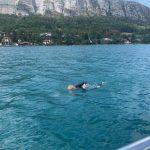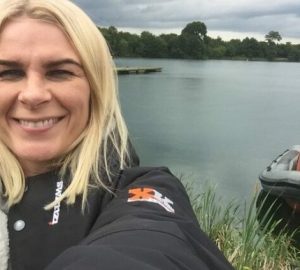Race, play, just swim, workout, train or practise?
Last week we asked, “what are you swimming for?” and looked at the pleasure to be had from simply joining a group of like-minded people and going for a leisurely open water swim. We contrasted this with goal-driven training. A great thing about swimming is that it gives us both these options, and several others. We think it is worth taking a moment each time you get in the water to ask yourself what you are swimming for, and noticing and embracing the activity for what it is. Here are some of our suggestions:
Play
Children do this brilliantly. Adults usually not so well, or they think it’s pointless or a waste of time, which is a shame as playing in the water can do lots for your confidence and skills. Children lose their fears and relax when they play. They’ll dive to the bottom to collect coins, do handstands and play tag, all the while ‘learning’ how their body behaves in water. While adults playing in a pool might seem odd, open water gives us lots of opportunities from diving under waves and body surfing at the beach to leaping into plunge pools or exploring a river bed. The only danger with play, and young men and male teenagers are particularly prone to this, is when risk taking becomes extreme and people put themselves in danger.
Just swim
Open water is the perfect place to ‘just swim’. Like going for a walk, it’s a wonderful way to enjoy your surroundings while getting some gentle exercise. But what about the pool? There are people who turn up at the pool daily, swim a short distance using a barely recognisable stroke, and do the same, without change, for years. This can seem mysterious to more ‘serious’ swimmers. Why are they not interested in getting faster or improving their technique, and why do they never get their hair wet? But does it matter, if that’s what they’re happy doing? We’d always recommend they try getting outside though.
Workout
This is what a lot of masters swimmers do both in their club sessions or if they go to the pool on their own. I see a workout as little more than just swimming but with some structure involved and a wider variety of paces and strokes used. The purpose of a workout is usually to build general fitness, which it does, and there will be some swim speed and endurance benefits. They can also be enjoyable, in a masochistic way.
Train
A training session is a little different to a workout, although you might do exactly the same thing. Whereas a workout is a one-off activity (even if you do several workouts a week) a training session is part of a larger plan. A training session will have specific goals and build on previous sessions within an overarching structure, usually with the target of a specific race or challenge.
Practice
Swimming efficiently and without injury requires the development and refinement of a unique combination of movements. For most people those movements do not come naturally and like playing a musical instrument take hundreds of hours of concentrated practice to master. When we practise our focus is on technique rather than fitness improvement, whether it’s through drills to isolate a particular movement pattern or full-stroke swimming while concentrating on a particular aspect. If you want to improve then time spent practising is essential.
Race
For some, the entire point of swimming is to race. This usually starts with short distances in the pool and many youngsters involved in the sport, and plenty of masters swimmers too, define their level of achievement by the time it takes them to cover a certain distance. The focus on speed and competition can be very motivational and exciting for some, but it puts plenty of others off.
The growth in mass participation open water events is welcome because of the emphasis on taking on challenges and completion rather than speed. It would be great to see more of these for youngsters as it might keep some of those disillusioned by pool-based swimming in the sport.
Solo long-distance challenges
A marathon swim is the ultimate swimming achievement, at least among a certain group of swimmers. This is about man versus nature and your ability to deal with a harsh environment in only a costume, cap and goggles as much as your capability to cover the distance. If you’re in the water for one of these you’d better make sure you’re fully prepared and supported.
Usually it’s obvious what you’re in the water for, but sometimes the distinction is blurred, especially between work-outs, training sessions and practice – and some days your time in the water combines elements of all three, with perhaps a bit of play thrown in. If you want to become a faster swimmer, then ideally you’ll find a good balance between training and practice, but don’t ignore the other aspects of swimming because that’s often where the joy is.






